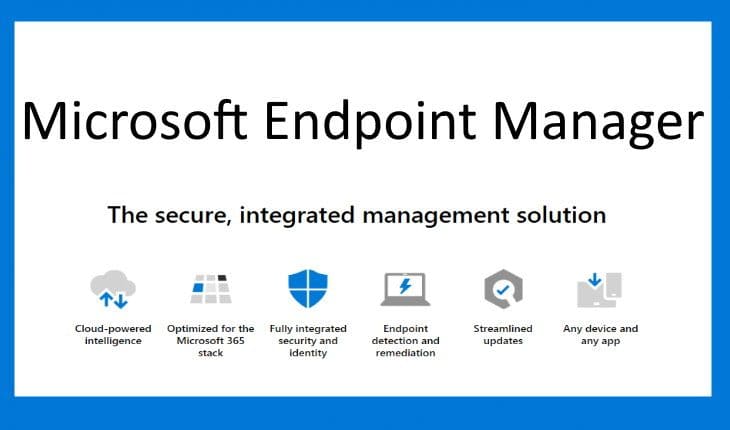SCCM 2001 Vista previa técnica.
The Microsoft Edge Management dashboard provides you insights on the usage of Microsoft Edge and other browsers. In this dashboard, puede:
- See how many of your devices have Microsoft Edge installed
- See how many clients have different versions of Microsoft Edge installed
- Have a view of the installed browsers across devices
Desde Biblioteca de software workspace, hacer clic Microsoft Edge Management to see the dashboard. Change the collection for the graph data by clicking Navegar and choosing another collection. Por defecto, your five largest collections are in the drop-down list. When you select a collection that isn’t on the list, the newly selected collection takes the bottom spot on your drop-down list.
This preview release also includes:
Improvements to Check Readiness task sequence step
You can now verify more device properties in the Check Readiness task sequence step. Use this step in a task sequence to verify the target computer meets your prerequisite conditions.
- Architecture of current OS: 32-bit or 64-bit
- Minimum OS version: Por ejemplo, 10.0.16299
- Maximum OS version: Por ejemplo, 10.0.18356
- Minimum client version: Por ejemplo, 5.00.08913.1005
- Language of current OS: select the language name, the step compares the associated language code
- AC power plugged in
- Network adapter connected
- Network adapter is not wireless
None of these new checks are selected by default in new or existing instances of the step.
The step also now sets read-only variables for whether the check returned true (1) or false (0). If you don’t enable a check, the value of the corresponding read-only variable is blank.
- _TS_CRMEMORY
- _TS_CRSPEED
- _TS_CRDISK
- _TS_CROSTYPE
- _TS_CRARCH
- _TS_CRMINOSVER
- _TS_CRMAXOSVER
- _TS_CRCLIENTMINVER
- _TS_CROSLANGUAGE
- _TS_CRACPOWER
- _TS_CRNETWORK
- _TS_CRWIRED
El smsts.log includes the outcome of all checks. If one check fails, the task sequence engine continues to evaluate the other checks. The step doesn’t fail until all checks are complete. If at least one check fails, the step fails, and it returns error code 4316. This error code translates to “The resource required for this operation does not exist.”
Integrate with Power BI Report Server
You can now integrate Power BI Report Server with Configuration Manager reporting. This integration gives you modern visualization and better performance. It adds console support for Power BI reports similar to what already exists with SQL Server Reporting Services. Save Power BI Desktop report files (.PBIX) and deploy them to the Power BI Report Server. This process is similar as with SQL Server Reporting Services report files (.RDL). You can also launch the reports in the browser directly from the Configuration Manager console.
Prerequisites and initial setup
- Power BI Report Server license.
- Descargar Microsoft Power BI Report Server-September 2019.
- Descargar Microsoft Power BI Desktop (Optimized for Power BI Report Server – September 2019).
- Configure the reporting services point
- Configure the Configuration Manager console
Configure the reporting services point
This process varies depending upon whether you already have this role in the site.
If you don’t have a reporting services point
Do all steps of this process on the same server:
- Install Power BI Report Server.
- Add the reporting services point role in Configuration Manager.
If you already have a reporting services point
Do all steps of this process on the same server:
- En Reporting Server Configuration Manager, back up the Claves de cifrado.
- Remove the reporting services point role from the site.
- Uninstall SQL Server Reporting Services, but keep the database.
- Install Power BI Report Server.
- Configure the Power BI Report Server
- Use the previous report server database.
- Usar Reporting Server Configuration Manager to restore the Claves de cifrado.
- Add the reporting services point role in Configuration Manager.
Configure the Configuration Manager console
- On a computer that has the Configuration Manager console, update the Configuration Manager console to the latest version.
- Install Power BI Desktop. Make sure the language is the same.
- After it installs, launch Power BI Desktop at least once before you open the Configuration Manager console.
OneTrace log groups
OneTrace now supports customizable log groups, similar to the feature in Support Center. Log groups allow you to open all log files for a single scenario. OneTrace currently includes groups for the following scenarios:
- Application management
- Compliance settings (also referred to as Desired Configuration Management)
- Software updates
El GroupType property accepts the following values:
0: Unknown or other1: Configuration Manager client logs2: Configuration Manager server logs
El GroupFilePath property can include an explicit path for the log files. If it’s blank, OneTrace relies upon the registry configuration for the group type. Por ejemplo, if you set GroupType=1, by default OneTrace will automatically look in C:\Windows\CCM\Logs for the logs in the group. En este ejemplo, you don’t need to specify GroupFilePath.
Improvements to administration service
The administration service is a REST API for the SMS Provider. Previamente, you had to implement one of the following dependencies:
- Enable Enhanced HTTP for the entire site
- Manually bind a PKI-based certificate to IIS on the server that hosts the SMS Provider role
A partir de esta versión, the administration service automatically uses the site’s self-signed certificate. This change helps reduce the friction for easier use of the administration service. The site always generates this certificate. The Enhanced HTTP site setting to Use Configuration Manager-generated certificates for HTTP site systems only controls whether site systems use it or not. Now the administration service ignores this site setting, as it always uses the site’s certificate even if no other site system is using Enhanced HTTP.
The only exception is if you’ve already bound a PKI certificate to port 443 on the SMS Provider server. If you added a certificate, the administration service uses that existing certificate.
Validate this change in the Configuration Manager console. Go to the Administration workspace, expandir Seguridad, and select the Console Connections node. This node depends upon the administration service. The existing prerequisites no longer apply, you can view connected consoles by default.
Wake up a device from the central administration site – From the central administration site (CAS), in the Dispositivos o Device Collections node, you can now use the client notification action to Wake Up devices. This action was previously only available from a primary site.
Improvements to task sequence progress
The task sequence progress window includes the following improvements:
- Show the current step number, total number of steps, and percent completion
- Increased the width of the window to give you more space to better show the organization name in a single line
Improvements to orchestration groups
Orchestration Groups are the evolution of the “Server Groups” feature. They were first introduced in the technical preview for Configuration Manager, versión 1909. In this technical preview, we’ve added the following improvements to Orchestration Groups:
- You can now specify custom timeout values for:
- The Orchestration Group
- Time limit for all group members to complete update installation
- Orchestration Group members
- Time limit for a single device in the group to complete the update installation
- The Orchestration Group
- When selecting group members, you now have a drop-down list to select the site code.
- When selecting resources for the group, only valid clients are shown. Checks are made to verify the site code, that the client is installed, and that resources aren’t duplicated.
- You can now set values for the following items in the Create Orchestration Group Wizard:
- Number of machines to be updated at the same time in the Rules Selection página
- Script timeout in the PreScript página
- Script timeout in the PostScript página




















